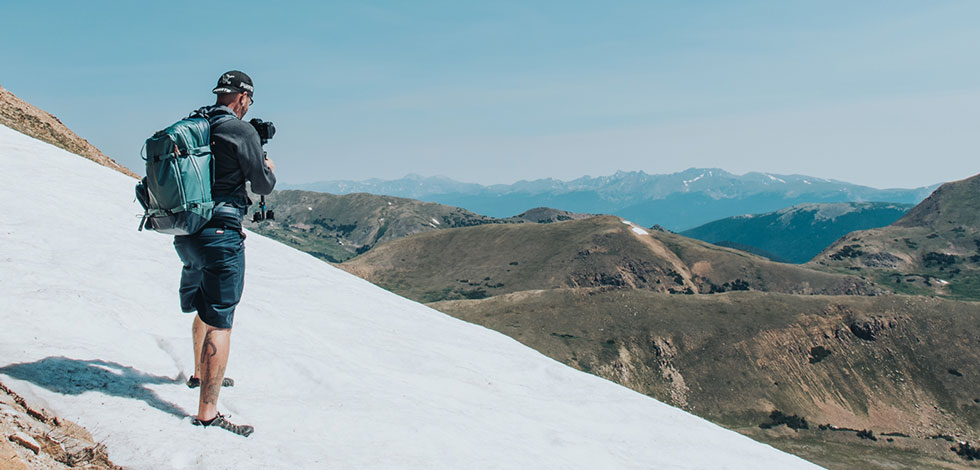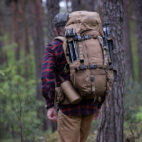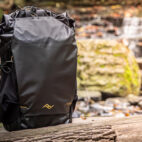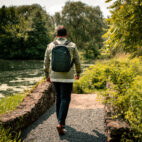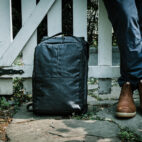Shimoda Explore 30 Backpack: Drive By
Like many out there I have yet to find the perfect bag. As a photographer, I struggle to find a bag that works for my uses. At times I need a bag that I can just carry a single camera and two lenses in. Other times I need something that can carry everything I need for a commercial or wedding shoot.
My full kit consists of:
3 Full frame camera bodies
4 Lenses (I don’t use the 70-200, so I save a lot of space there)
1 Drone
1 Monopod or Stabilizer (It depends on what I am shooting. I usually only need one, but occasionally I need both).
My work ranges from shooting a restaurant menu to hiking to a waterfall in Iceland with a couple, to outdoor apparel, and the needs for each are different. But what they all have in common is that I need a comfortable and secure way to carry my gear.
This is where I was excited to pick up the Shimoda Explore 30L backpack. My other camera bag is 22L and is just a tad too small for a full day, but perfect for just a quick hike ‘n shoot. But the Shimoda 30L has the perfect amount of room that I need for the full day adventure shoot. So let’s jump in.
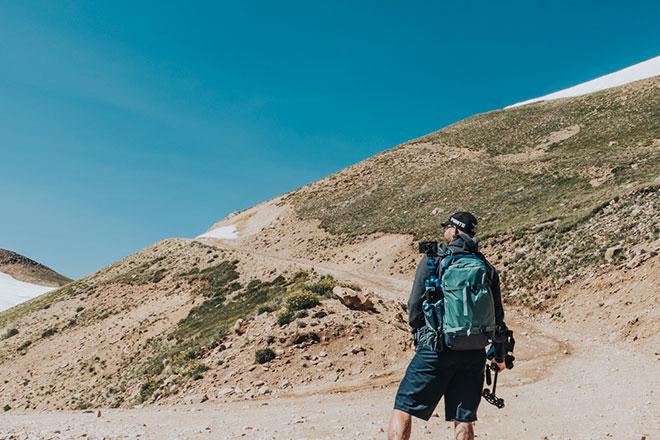
Not going to lie, when I first opened the box I was unsure if I would like the bag. Right away the material looked cheap, but I could tell it was ripstop, so there was that. I was also a little confused by the zipper layout. But the frame felt sturdy. I have one small and one medium core unit to use for the gear and the first impression of these was that they are very well built, and perfect for what I needed. They were thin yet sturdy so they would not add a lot of weight on a hike, but would protect and hold my gear. I had a shoot coming up that was a mix of hiking at 13,000 feet and mountain biking, so I was excited to see how this held up.
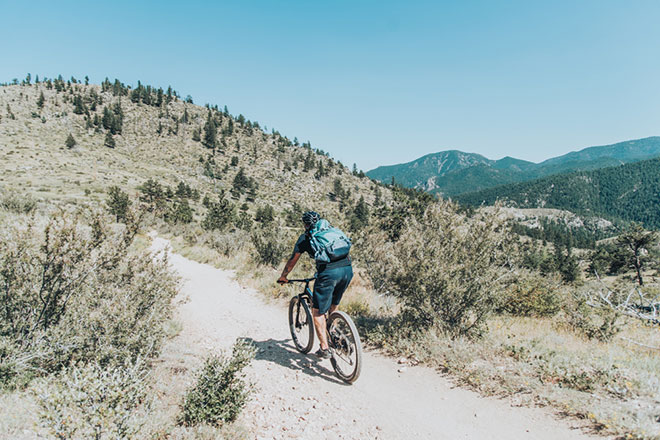
Who It Suits
As a cyclist and adventure photographer I like a bag that works well for both commuting/ every day as well as the specific uses it was intended for. Some days I am hiking to 13,000 feet. A 30L size is a bit big to fill up, throw on your back and ride 15 miles. But the first day I had it I wanted to give it a shot. I had to head into my studio and had all my gear at the house from a shoot the previous day. So I threw in two camera bodies with lenses, my lunches (I pack enough to feed a small family), my laptop and some assorted goods. The 30L bag has a laptop sleeve on the back that works for my 13″ but will not fit a 15″. There is enough room on the front to carry a 15,” but it does not have the built-in padded protection that the rear compartment has. But within the first few miles of my ride, I knew this bag was going to be a winner. The frame sat well, it kept the weight from pulling on the shoulders and felt comfortable on the hips. The airflow was decent, but not amazing.
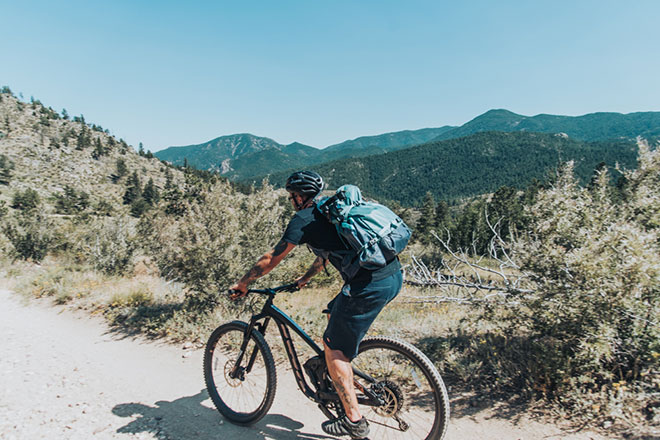
But the real test was the commercial shoot. So after off-roading a bit to get to the location, we hiked up to the top of the mountain. On this day I had two Nikon full frames, a Fuji mirrorless, three lenses, my DJI Spark in a case, my stabilizer and a tripod and a large water bottle. There was a decent amount of weight, but the bag carried very well. We had to scramble on some of the remaining snow to get to the top, and I was impressed with how stable the bag was while sliding around on the snow. The drone case strapped well on the front and the tripod stayed sturdy in the holder while strapped down. I hate when you get nailed in the head by a tripod when running around in the wild. The rest of the day was spent on the mountain bikes. We were not doing any intense downhill or all mountain for this, but rather we were merely working on getting the trail riding feel. For this, I only had the drone, one camera with a lens and the camera stabilizer strapped to the tripod holder. During this part of the shoot we probably rode about five miles and did a fair bit of trail terrain, and again I was impressed with the stability of the bag. While going over steep bits of the trail, the bag stayed in place, and the stabilizer weights did not swing forward and hit me. The camera and drone were secure in the bag as well.
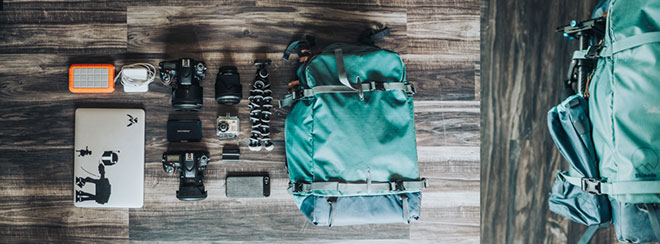
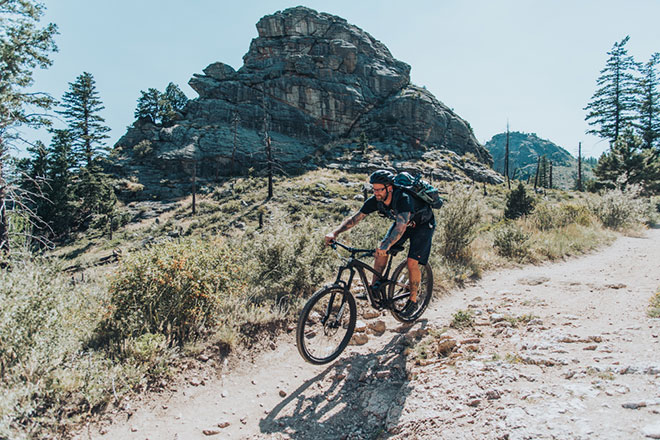
This bag is a great day/multi bag if you carry a decent amount of gear. I really feel that whatever your setup, you can make this 30L work for you. If you need two bodies and several lenses, it will fit. With room for some rain layers and snacks. If you just have one body and a lens or two, you can fit that and take any other gear that you need. I would say that this bag is more for the professional who knows their gear needs and how to pack. If you were out trekking for several days, I would suggest maybe buying either the 40L or 60L so that you can have all the gear that you need and not struggle with room. I can definitely say that this bag will be my go-to travel bag for any photo expeditions.
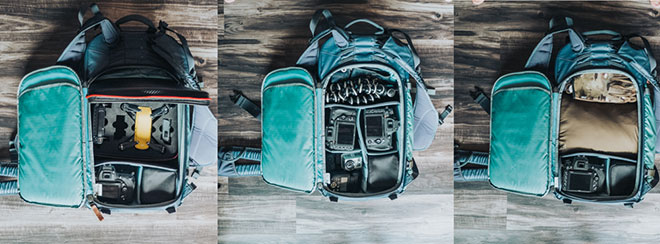
Who It Doesn’t
This bag is big. If your kit is a mirrorless kit, and only a couple of lenses, you will have a lot of room. Not saying that you won’t need it. But when I have my mirrorless setup, I go with a different bag. I would say that this is not a great bag for the standard wedding photographer, but if you are part of the adventure wedding crowd, this would totally work. A few others that I do not see this bag working for:
– Hobbyists
– City photographers
– Fashion/Studio photographers
“I would say that this is not a great bag for the standard wedding photographer, but if you are part of the adventure wedding crowd, this would totally work.”
The Good
Earlier I mentioned that when I first opened the bag, the first impression was that the material looked cheap. But after using it all day in a variety of elements, I can say that my first impressions were wrong. When I first use bags I am hard on them; I want to see if they will hold up when it matters. For this shoot, I was not across the world so if it broke I was not SOL. But I made sure that I was not soft on the bag. I let it fall on the rocks, and in the snow. I let it get dirty, and it held up.
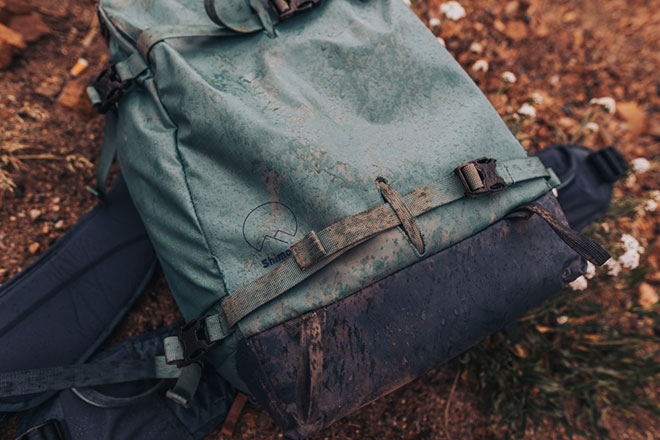
The bag is made of a weather-resistant, resin-coated nylon shell. Like many bags it is not touted as waterproof; don’t throw your bag overboard. But I would be 100% confident in taking this bag out in adverse conditions. I would still hike in pouring rain carrying all my gear and not worry. Shimoda utilizes weatherproof YKK® zippers which give me peace of mind about my gear staying dry.
“I let it fall on the rocks, and in the snow. I let it get dirty, and it held up.”
A couple of weekends ago I was up in the mountains shooting a wedding and an adventure session. This was rad because during weddings I don’t have time to worry about my bag. My previous wedding bag is beat to shit, but still going strong. But for this particular wedding, I was doing both photo and video, so I had a bit more gear than when I’m just doing photo. So I took the Shimoda 30L, and it was with me the whole day. When we were doing photos at the top of the mountain, someone brought champagne for the couple. During the shoot, the bottle tipped and created a puddle of bubbly around my bag. I didn’t have time to fret and dash over to move it, but I knew that nothing would happen to the gear inside. While I am continuing to shoot, I hear the sound of the bag being dragged. I look back and see someone just dragging it out of the puddle, across the mountain trail. But here is the kicker, the bag is fine. No tears, the gear was fine and dry, and the mud just wiped off.
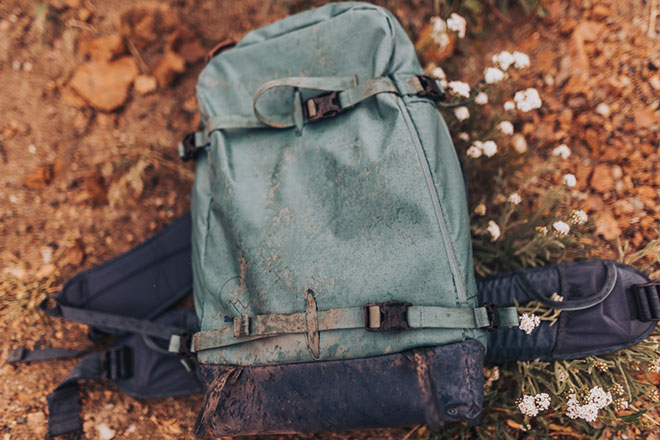
Probably my favorite part is the balance of the frame. When I set the bag down, it did not tip over. As someone who has gear and “fragile” pieces, I hate when I have a pocket open and let go of the bag, and it tips over, sending the pieces spilling out like alphabet soup in a toddler’s hands. So the fact that this bag stays upright was huge for me.
Also earlier I wrote about the pockets and zippers and how they were a bit confusing at first. Well after using the bag I enjoyed the layout. You can access various parts of the bag without letting open parts that you don’t want. The pockets allow for you to keep your fragile parts safe while being able to access the things that you need.
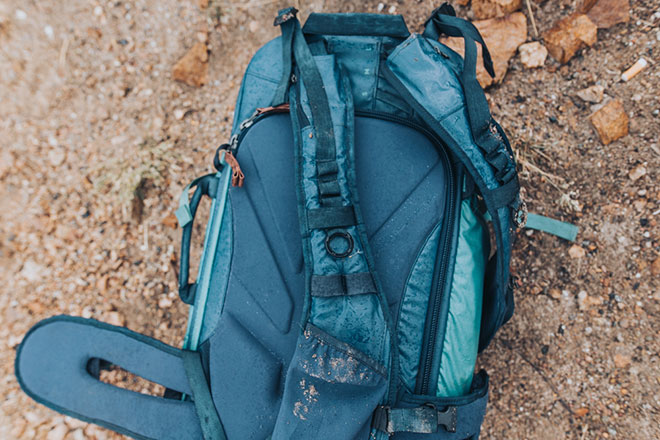
There are several well built carry handles on the bag. One on the top and one on the side. These are great for quick transport or to carry the bag if you have something else on your back.
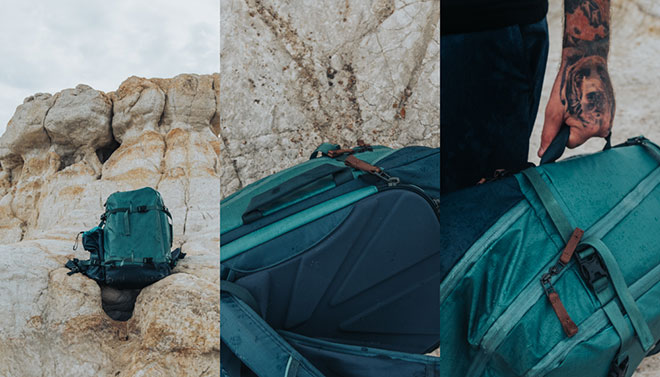
There are some bags that are low profile, and that is what they are made for, mall ninjas. While this bag is not what you would call low profile, I do not feel like Quasimodo while carrying a full 30L. Some may not like the colors, but for me, I don’t mind what they have chosen.
“Probably my favorite part is the balance of the frame. When I set the bag down, it did not tip over.”
The tripod holder, while strange at first, is now a nice feature. It zips up into a pocket of the bag and can be hidden, or you can have it out with a fairly large tripod in it and keep it buckled in place. While I did not use it as such, you could take it off of the webbing on the interior and use it as a holder for snacks, water, lens caps, Sour Patch Kids, or trash. This, in my opinion, makes the pocket very modular and useful to those out in the field as there are times where you may not want to put trash into your bag, but you want to and should follow the Leave No Trace principle and pack everything out. This means that you can store the tripod holder many places on the bag and still keep the area clean. It is also big enough to hold a large bottle of whiskey (plastic, so you don’t break any glass) or a teddy bear, whichever you may need in the wild.
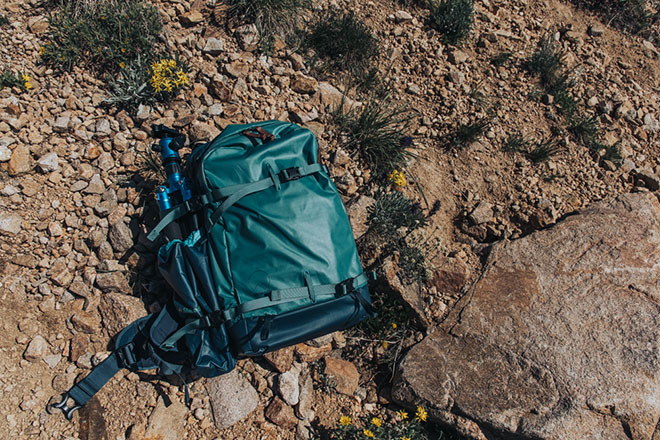
The Not So Good
There is not a whole lot that I can think of as far as wishes. Although it would be cool if the front pocket had some organization as in an admin panel of sorts. A pocket, or pouches that you could store pens, a notepad, or other things like that.
The upper pocket has some organization but is not set up for the above-listed items. Several items such as batteries, chargers, or memory card wallets will fit well. There is room in this pocket for a small mirrorless camera, or a lens case, or a GorillaPod.

Verdict
I was very impressed with the bag overall. I loved the stability and the comfort. It packs gear very nicely and holds more when strapped on correctly. When carrying a lot of equipment for several hours/days having a bag that is comfortable is a pleasure. The bag does not hold onto dust or water, which is nice when you have several thousand dollars of equipment inside. You can tell that people who not only use cameras but also get out and adventure worked to create the perfect bag. I can feel the frustration of not being able to find a bag that fits your lifestyle all being fleshed out and worked through to build a bag that you could carry for years to come.
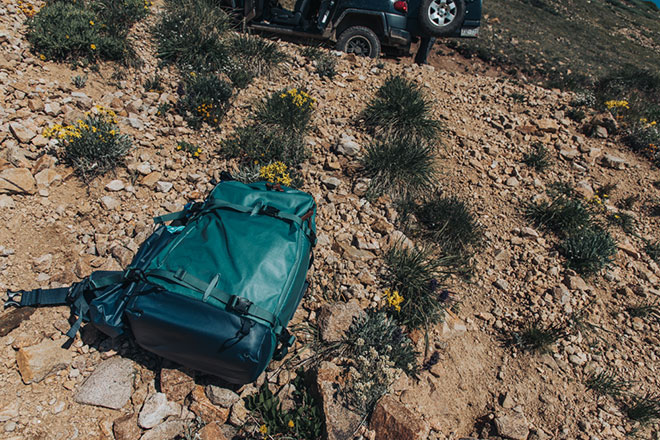
Matt Ritscher is a Colorado-based adventure and wedding photographer. Check out his work here.





 Carry Awards
Carry Awards Insights
Insights Liking
Liking Projects
Projects Interviews
Interviews
